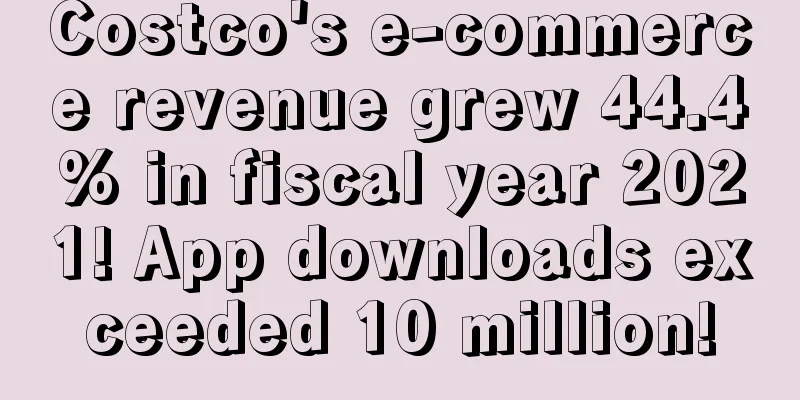Trend Insights | Latin America is full of business opportunities. How can sellers get in?

|
As we enter 2022, the impact of Amazon's account ban is still lingering, causing big sellers to suffer losses. At the same time, emerging platforms have emerged and impacted the original landscape of cross-border e-commerce. The industry is moving forward slowly amid the turmoil.
In addition, as more and more sellers enter the cross-border market, some old cross-border e-commerce markets in Europe and the United States are beginning to become saturated, and it is no longer easy for sellers to gain a foothold on large sites.
Nowadays, many cross-border sellers lament that it is becoming increasingly difficult to do cross-border e-commerce. However, unlike the European and American markets, which are showing a downward trend , Latin American cross-border e-commerce is thriving, with an e-commerce growth rate of more than 30%, even surpassing many traditional markets. Therefore, it is also regarded by sellers as the next cross-border blue ocean.
But how to develop this emerging market has become a question that many sellers are thinking about. Taking advantage of the "Crossing Borders" 2022 Latin American Full Ecosystem Industry Summit Forum hosted by LM123 and the official website, LM123 specially invited Harold Chen, Director of Corporate Development of 360Lion Logistics, to conduct an in-depth study on the theme of "Insight into Latin American market trends and seize industry development opportunities".
In recent years, a number of factors, including continued economic growth, competitive labor costs, and proximity to major U.S. markets, have combined to make the Latin American market a viable business destination.
LM123 learned that the annual growth rate of the Latin American e-commerce market has been in double digits in the past five years, and is expected to remain above 30% by 2025.
Especially during the pandemic, global cross-border e-commerce has exploded, and Latin America's growth rate is far ahead. According to eMarketer data, Latin America ranked first in the global retail e-commerce sales growth ranking in 2020 and 2021, with a growth rate of 63.3% in 2020, far ahead of the second-placed Central and Eastern Europe by nearly 20 points. Even in 2021, when the epidemic slowed down and demand declined, it still ranked first in the world with a growth rate of 25.6%.
LM123: There is a saying in the cross-border e-commerce circle that "Latin America may be the last blue ocean for cross-border e-commerce." Although the rapidly growing Latin American e-commerce market has attracted many cross-border platforms, logistics companies, and suppliers to enter the local market, as competition among platforms intensifies and profits decline, is the blue ocean a false proposition? Is there still a way out for small and medium-sized sellers?
Harold Chen: Latin America has an e-commerce market size of more than 200 billion US dollars, and the e-commerce penetration rate is only about 6%, which has a lot of room for improvement compared with the European and American markets. At the same time, the characteristics of the Latin American market are mainly cross-border e-commerce platforms. Mainstream e-commerce platforms such as Meikeduo and Shopee are friendly to small and medium-sized sellers. With the support of traffic dividends and platform resources, Latin America is relatively a blue ocean market, whether it is a top seller or a small and medium-sized seller, with room for growth.
LM123: Among the Latin American markets analyzed by Vision, which markets do you think have the greatest development potential? Which ones are worth entering for newcomers?
Harold Chen: For sellers who are new to Latin America, it is recommended to start with the Mexican market. Because Mexico is located between North America and South America, it has a huge demographic dividend, is the second largest market in Latin America, and is the largest market among Spanish-speaking countries. If sellers have previously worked in the Spanish e-commerce market, there are certain language advantages in entering the Mexican market. In addition, since Mexico is close to the United States, it is theoretically cheaper for sellers on the US site to prepare inventory in the Mexican market, because Mexico's preferences for products are similar to those of the United States to a certain extent, and the same product line may be universal. In summary, novice players can consider Mexico; and as Brazil is the largest market in Latin America, due to the particularity of its Portuguese-speaking world, it is still necessary to follow the platform’s pace. It is recommended that you try more platforms such as Meikeduo and Shopee.
Mature sellers can try relatively emerging markets such as Chile, Colombia, and Peru, which have strong local purchasing power. Chile is known as Little Europe, with strong per capita GDP, per capita income, and purchasing power, but the population is less than 20 million, and the population base is small. Colombia has a population of more than 50 million, and its per capita income is not as high as Chile's, but the macro-economy is good this year, and the scale of local e-commerce is larger than Chile, so there is potential for cross-border growth.
Faced with the fast-growing Latin American market, major platforms cannot afford to miss this new opportunity for economic growth. Especially as the dividends from the epidemic fade, overseas online demand is declining, the cross-border logistics industry is facing insufficient overall orders, and the order volume of mainstream e-commerce traffic platforms has shown a downward trend.
LM123: Mainstream cross-border platforms are increasing their investment in Latin American e-commerce, and independent websites are also targeting this hot spot for e-commerce. What impact does this trend have on Latin American e-commerce?
Harold Chen: This is a very good question. First of all, we should pay attention to why these mainstream platforms are increasing their presence in Latin America. First of all, the outbreak has promoted the further penetration of online shopping among Latin Americans, and a group of new consumer groups have emerged, such as young people, middle-aged and elderly people, etc. With the continuous improvement of infrastructure and logistics distribution systems, Latin Americans have experienced the convenience of online shopping, which has driven their consumption methods and habits of online shopping.
Secondly, although the market situation this year is not ideal, inflation has led to a decline in the purchasing power of local people in Latin America, and the local currency has depreciated more or less against the US dollar, but in fact, the overall e-commerce market in Latin America is still growing at a considerable rate. The so-called time machine theory applies to China, Europe and the United States. In terms of the development trend of cross-border e-commerce, Latin America is just starting. Sellers should still pay more attention to some actions of large platforms, and then make better judgments based on their own categories and operation logic to choose the platform and operation method that suits them. LM123: Which sellers are suitable for each of the current mainstream platforms in Latin America?
Harold Chen:
①Shopee
Shopee's expansion in Latin American countries has slowed down compared to the previous two years, but it still has a relatively large traffic dividend. This is mainly due to the continuous large advertising investment in several countries, and sellers can also enjoy a certain amount of traffic dividends. Secondly, Shopee prefers small and light items with low average order value, and has a certain distribution gene. It is recommended that sellers pay more attention to this year's investment categories. At the same time, when selecting products, consider factors such as average order value, supply chain, and logistics costs. It will be more advantageous to try to choose products with high average order value and high profits.
②Meikeduo
The entry threshold of Meikeduo is relatively high. As the leader of the local e-commerce industry in Latin America, Meikeduo has a history of more than 20 years. Since Latin Americans are very brand loyal, it has obvious traffic advantages in various countries and has a great first-mover advantage. Sellers with certain brand strength can operate this platform well.
③Walmart
Walmart has many offline supermarkets in Latin America, and compared with other platforms, it has an overall layout of "online + offline". Fresh food is its strong category, and Walmart is also expanding other categories online. Although Walmart's brand recognition has appeal in Latin America, Walmart's cross-border platform is still in its infancy and has a bonus period.
For sellers, they need to communicate with the investment manager in advance, pay attention to the product selection categories, and also consider the "online + offline" factors, which categories sell well offline, what kind of brand and what kind of pricing. For the same product on Walmart online, how do you consider product selection and pricing?
④Amazon
Amazon is the first American platform to do cross-border e-commerce in Latin America. Thanks to its brand endorsement, Amazon has considerable cross-border e-commerce volume in Brazil and Mexico. Amazon has a high average order value, so you can focus on the 3C category when selecting products. I have seen that the in-site delivery data of Amazon Brazil sellers is quite impressive, with an ROI of more than 20.
⑤Linio (Falabella)
Linio is strong in Chile, Colombia, Peru and other regions, and has a strong offline system. Falabella is located in the largest shopping mall in downtown Santiago. Currently, Falabella is the only cross-border platform open to Chinese sellers, and it also has large brands such as Sodimac.
Falabella's operating efficiency and turnover are better than its peers, which indirectly confirms that Falabella itself is strong in the layout of retail resources. In addition, Falabella also has local services such as payment, finance, banking, and logistics systems. When consumers choose e-commerce platforms, they will consider supporting financial services, whether there are consumer installment products, and good payment methods. Of course, this does not mean that these are open to cross-border sellers, but it also indirectly shows that Falabella has considerable brand accumulation and volume in Chile, Colombia, and Peru.
LM123: More and more independent websites and cross-border sellers are pouring into Latin America. Based on this trend, how do you predict the future development direction of independent websites in Latin America?
Harold Chen: Latin Americans are actually very brand loyal . Unlike China, we Chinese like new things, so there will be a steady stream of new products. Therefore, domestic substitution has been very successful in the entire industrialization process of China, and even in many industries. In Latin America, sellers who understand the situation know that, first, the market share of European and American brands in Latin America is very high, and second, it is not so easy to establish a brand. One reason is that Latin America is mainly offline shopping, and many Latin Americans like things that can be seen and touched, so online advertising requires a certain amount of time and continuous investment, but once brand awareness is established, the stickiness to this brand is difficult to break, and products can be expanded horizontally.
For example, a domestic brand can only do this category. Once it crosses industries or makes other products, consumers often think it is unreliable. But this is not the case in Latin America. Latin American people often know the brand and have used the product before. When it crosses categories to make other products, they will think it is doing well and often want to try it.
This is a relatively obvious consumer concept in Latin America. Based on this , large independent sites or companies should think carefully about how to launch and build brands in Latin America. Building brand awareness is a long-term plan. I have seen some independent site brands in the local area already doing offline advertising, for example, using bus stations, roadside billboards and pop-up stores to strengthen offline consumer interaction. SHEIN is also directly localizing in Brazil. Building a local system can better reach consumers.
As the social e-commerce model gains widespread attention in Latin America, social e-commerce platforms are experiencing strong growth. LM123 learned that in major cities such as Brazil and Mexico, more and more consumers are choosing social commerce for shopping.
Facebook and WhatsApp, as the main social platforms used by online shoppers, are particularly popular among local users. Among the 55% of purchases made through social commerce, more than 85% of consumers claim to have purchased products from Facebook, nearly 40% through WhatsApp, and 30% through Instagram.
Therefore, the layout of social media has also become the focus of many Latin American sellers.
LM123: Latin America is also beginning to show signs of spreading rapidly in the field of social e-commerce. Is this a new traffic outlet for sellers? Will the economic and cultural differences between countries become a constraint on the development of social e-commerce?
Harold Chen: Social e-commerce is currently a new traffic growth point for big sellers , but for many small and medium-sized sellers, they are not paying much attention to this field for the time being. Many big sellers have both platforms and independent websites, and can attract traffic through social media. Social media in Latin America is very similar to that in Europe and the United States. Social platforms such as Facebook, Instagram, YouTube and TikTok are developing very fast in Latin America, and the user base, app downloads and activity in mainstream countries are continuing to grow.
On this basis , Latin American sellers can cooperate with KOLs for electronic products and beauty products, and can attract a certain degree of traffic through electronic product unboxing videos, makeup trials, etc. At the same time, local Latin American influencers have a large number of fans, but because the influencer economy is still in its infancy, the traffic cost is relatively controllable.
For example, giving free samples to influencers can buy a certain amount of influence. However, the first-tier influencers are not cheap, because the top Internet companies and large platforms have already cooperated with them, and their traffic costs will inevitably increase. In the sub-category field, you can seek small and medium-sized influencers as an entry point.
In some Spanish-speaking countries, such as Mexico and Chile, social media is still in its infancy. At present, the traffic cost is low. Buyers who have the ability to build independent websites can try social media traffic diversion. If TikTok opens up to third-party sellers to do social e-commerce in Latin America, everyone should pay attention to it as soon as possible.
LM123: As we all know, the logistics infrastructure problem in Latin America has become a stumbling block for cross-border e-commerce sellers. What solutions do you think there are?
Harold Chen: Generally speaking, logistics and customs clearance in Latin America are indeed complex. Each country’s tariff policies, customs clearance requirements, and final warehousing and logistics services have their own characteristics and differences. In particular, the voyage distance to Latin America is very long and the logistics cost is very high. Sellers are advised to compare the strength, timeliness, and price services of different service providers. Especially in this year’s market situation, with the mixed quality of the freight forwarding industry, try to choose a service provider with brand endorsement and strength.
Weishi has dedicated small packages, FBA first-leg, overseas warehouses and freight forwarding. It is a comprehensive logistics provider. We will also provide targeted solutions according to the needs of different sellers, so seller friends can directly contact business partners or directly contact us for docking.
In summary, cross-border e-commerce is actually a game of occupying a position. Only by occupying the position first can you win. Based on the "position" theory, the Latin American market is undoubtedly a good opportunity for many sellers to enter, and the cutting-edge business opportunities in the Latin American e-commerce market shared by Harold Chen have also awakened many sellers to the awareness of multi-channel, multi-brand, and multi-market layout. At the same time, when developing markets and categories, it is necessary to understand market conditions in real time, make use of the platform's value-added services and professional team, comprehensively evaluate consumption trends in the target market, and expand business in a targeted manner to achieve twice the result with half the effort, effectively break through sales growth pain points, and maximize profits!
Cross-border e-commerce in Latin America is developing rapidly, and the market potential is unlimited and waiting for those who want to go overseas to stimulate it! As for how to seize the latest business opportunities in Latin America and be the first to enter the Latin American blue ocean market platform, you can also scan the code to participate in the 8.26 "Crossing Borders" 2022 Latin American Full Ecological Industry Summit Forum. The conference gathered many industry leaders and overseas sellers to communicate and discuss together to make plans for successful overseas expansion! |
<<: Britain's largest port strikes, dozens of cargo ships affected! Losses amount to $800 million!
Recommend
What is Zalando? Zalando Review
Zalando is a German e-commerce platform founded by...
What is Prime Now? Prime Now Review
Prime Now is a service proposed by Amazon in Decem...
What is AAFA? AAFA Review
The American Apparel & Footwear Association (A...
What is aCommerce? aCommerce Review
aCommerce is an e-commerce TP agency operation com...
What is ShopGo? ShopGo Review
ShopGo is a local e-commerce service system in the...
What is Yimaibao? Yimaibao Review
Yimaibao is a cross-border e-commerce cloud servic...
Global holiday online sales hit a record $1.2 trillion, and returns soared
It is learned that on January 6, according to fore...
Costco's online sales momentum is strong! Sales increased by 20.8% in June
<span data-shimo-docs="[[20,"获悉,据Costco最新报...
Labor negotiations at US West Coast ports failed to reach an agreement! US port congestion will reach its peak in July!
<span data-docs-delta="[[20,"获悉,据外媒报道,由于国际...
What is generationtea? generationtea review
Generationtea specializes in importing tea directl...
What is Jijia Logistics? Jijia Logistics Review
Qianhai Jizhijia Logistics (Shenzhen) Co., Ltd. wa...
Amazon's "0 Yuan Shopping" reappears? Sellers collectively received a large number of orders, but 50% of them were cancelled!
▶ Video account attention cross-border navigation ...
What is Auchan? Auchan Review
Auchan is the second largest supermarket group in ...
What is Wanfang Network? Wanfang Network Review
Shenzhen Wanfang Network Co., Ltd. is a cross-bord...
What is YouTube? YouTube Review
It is a video sharing website originated from the ...









